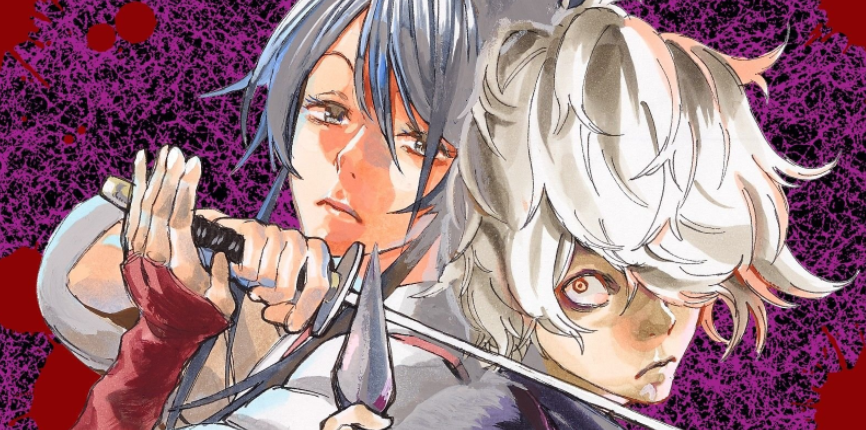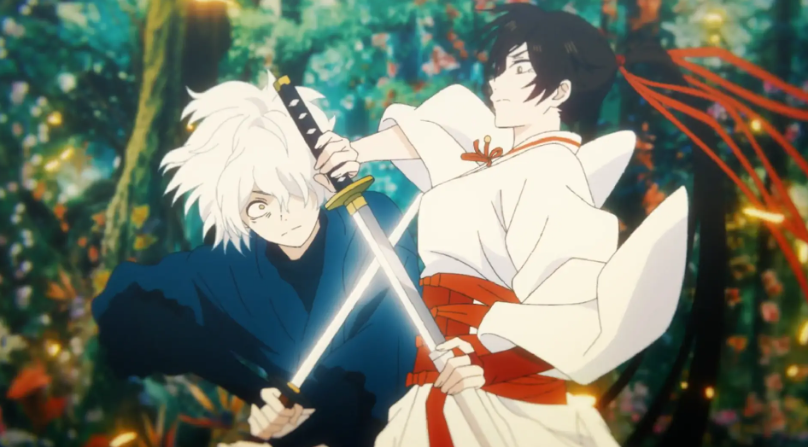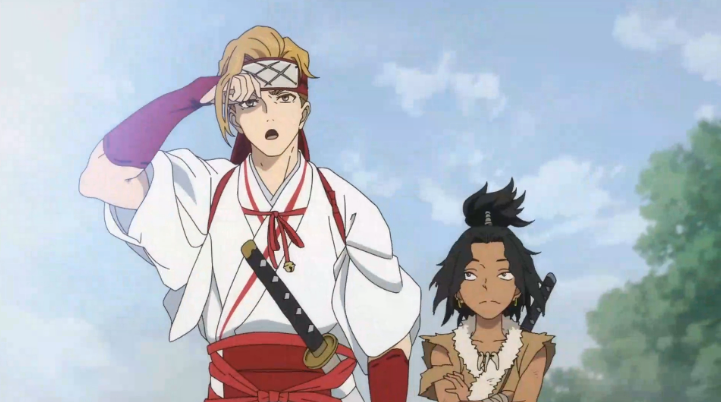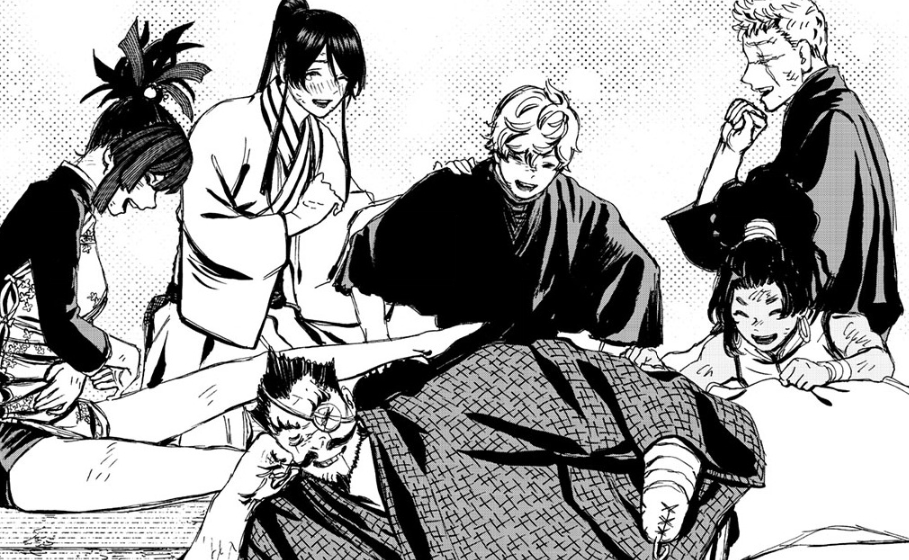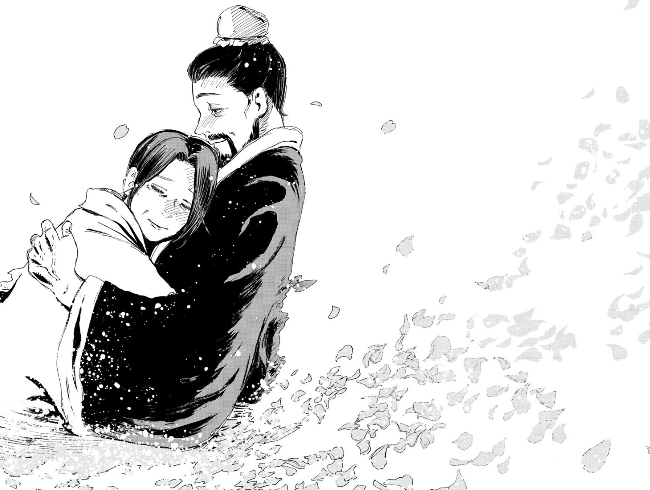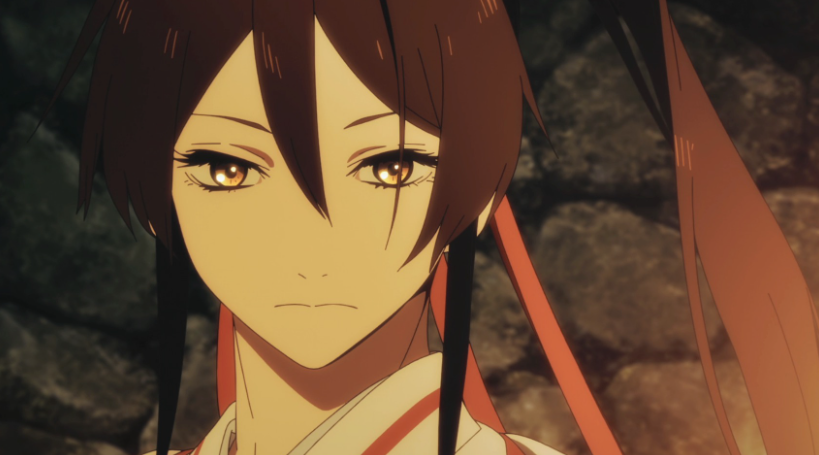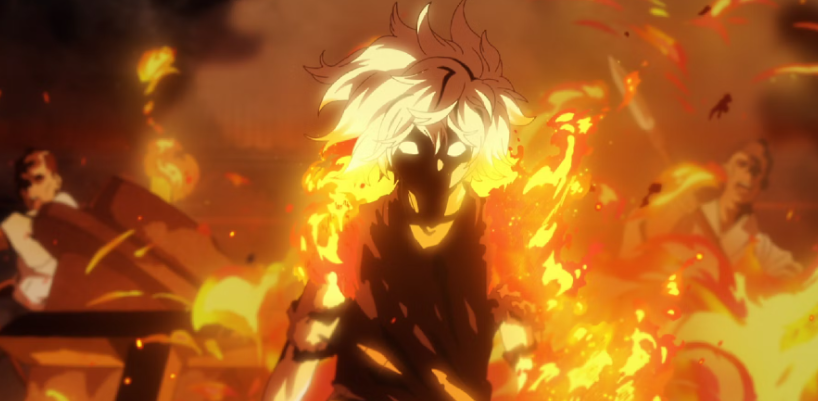Hell's Paradise: An Excellent Manga with a Good Anime
Heavy spoilers ahead
This is a retrospective commentary as I wrote another Hell’s Paradise review some time last year and always planned to expand on it, but now that we’re six episodes deep into the anime I think it’s finally time to refresh my thoughts. In my excitement for the upcoming Lord Tensen arc, I read a few chapters to remind myself of what’s to come, and unsurprisingly re-read the whole manga over the course of the week. It’s just that good.
Hell’s Paradise by Yuji Kaku follows convict shinobi Gabimaru the Hollow on his quest for a pardon from the shogunate. If he wants to avoid execution and live a free life, he has to embark upon the mythical Shinsenkyo island and bring back the elixir of life. Tethered to an executioner monitor from the famed Yamada Asaemon clan and rivalled by the worst death-row convicts from across Japan, the task quickly devolves into a violent battle royale as everyone vies for the pardon. The surviving convicts all have compelling reasons for wanting the pardon, and their pasts leading up to their arrests reveal that sometimes the law isn’t always just.
There is much to admire about this series. Heartless and stoic Gabimaru isn’t hollow at all. He loves his wife dearly, risked imprisonment for her, and now risks his life just to meet her again. Despite his infamy and power, he immediately recognises the strength of his monitor Sagiri, a woman Asaemon in a world dominated by men and plagued with misogyny. Only after their introduction do we witness Sagiri’s struggle against everyone else’s scepticism, the patronising suggestions that she would be better off birthing children for the clan instead of fighting, the pitying remarks of “good, for a woman” that she constantly endures. That Gabimaru meets her once, immediately assesses her skill as a fighter in her own right, shows not only is he no respecter of persons, but imbibes the lessons of kindness and consideration from his wife. As the series progresses, Gabimaru and Sagiri equally depend on each other for emotional and physical strength. A key theme of Hell’s Paradise is about finding the strength in weakness.
The bizarre supernatural creatures our convicts and executioners encounter pale in comparison to Lord Tensen, the true antagonist and creator of the island. Split into seven human entities that can switch between male and female bodies, Lord Tensen has mastered Tao, an ancient mystic art that utilises the power of yin and yang opposites, navigating the middle way to manipulate matter at will. Having studied Tao and its attributes for 1000 years, Lord Tensen is arrogant and unstoppable, and their battles with the charismatic Aza brothers as well as Yamada Asaemon Tenza are to show the reader just how dangerous they are. Chobe and Toma are instantly immobilised having just decimated a horde of monsters, and Tenza sacrifices his life for Nurugai, getting mercilessly tortured in the process. Nurugai is saved by Tenza’s mentor, Shion, and the surviving pair vow to avenge him.
Genuine pain when I see him. Was barely in the story but had such a massive impact.
Tenza’s death is the most heart-breaking of the series and it plays a significant role in foreshadowing the breakdown of the convict/executioner binary. Tenza was ahead of his time and a free thinker: he recognised that Nurugai’s imprisonment was unjust and took no qualms in cooperating with, and rescuing her. It’s reasonable to conclude that Shion witnessing Tenza’s care for Nurugai softened his own heart towards her and the other convicts, and Shion thus becomes a mentor and voice of reason for the assembly.
Now that Lord Tensen is identified, and the group all learn about Tao and its purpose on the island, the play between opposites takes full effect in the story. Strength and weakness, convict and executioner, just and unjust, male and female, right and wrong, are broken down and eroded, and characters are forced to confront their own failings so that they can find the middle way of themselves. As they form an unlikely alliance, they let go of their prejudices. When they battle Lord Tensen, they are also figthting against themselves.
Lord Tensen…
Due to the psychological nature of these battles, there is much internal monologing, lots of strategising, plenty of desperation as they inevitably think about their goals and what they are fighting for. None of them are really fighting for themselves, and the pair that first realises the significance of this is Chobe and Gabimaru. During their confrontation, both lose sight of themselves. Chobe fights for Toma. Gabimaru fights for Yui. Their overwhelming emotions lead to a pitiful draw, but they both learn the importance of maintaining their middle way if they want to defeat Tensen. This means that the fight sequences aren’t particularly exciting and they lack the power-packed finesse as seen in series like Sakamoto Days, but they are tense and compelling to read. It’s as much a battle of wills as it is for their bodies, and seeing the transformation and development of these characters through their battles makes for fantastic reading.
The lessons the Asaemon learn are not to be forgotten here. As renowned executioners from a strict order, they also carry an arrogance that has no meaning on the island. Many view themselves as bastions of justice, higher in class and virtue than the convicts, and only too happy to threaten beheading at the tiniest slight. Sagiri’s the first Asaemon who empathises with her convict. Tenzen is the second. Later, Senta concedes that he admires the carefree nature of his convict, Yuzuriha. When they encounter one of the Tensen, he sacrifices himself for her. Perhaps the most surprising is Fuchi, who uses the last of his strength to administer life-saving aid to Gantetsusai, an action that forever changes the latter and his outlook on the value of life. The final major Asaemon sacrifice is Shugen, who aids Gabimaru’s final attack against Rien—the true leader of Lord Tensen—killing himself in the process.
More pain.
It’s important to note that most of the major deaths are from the executioners. Having occupied lofty positions, holding everyone else’s lives in their hands, the Asaemon had much to learn about equality and justice. Their deaths encapsulate the concept of gaining strength by fighting for others, having a goal that goes beyond the self. By finally having someone else to fight for, they defeat Tensen in more ways than one, and in turn, the convicts fight for them and their memory, which becomes a source of their own strength.
By contrast, the convicts also sacrifice themselves, but these come with two major fakeout deaths, one of which (Yuzuriha) disappointed me on my first read. But then juxtaposing the convicts’ temporary sacrifices with the Asaemons’ very-real deaths, I wonder if Kaku did this to give the convicts a second chance to live sacrificial lives instead. They were already planning to die in the first place, so death isn’t an ultimate sacrifice for most of them, but turning away from their old behaviours and carrying the torch of the ones who made their lives possible, or starting a new life according to their own terms, might be a more fitting end.
Found family moment. Happy tears.
This concept of selflessness returns again and again. One such instance is the battle between Gabimaru and his potential successor, Shija. Shija is obsessed with Gabimaru and harbours an infatuation for him, but despite the extremes of Shija’s affection, it’s clear they deeply admire Gabimaru’s skill and desire to be recognised by him. Shija’s love compels them to fight with everything they have, and once they are defeated by Gabimaru, this love then helps him: Shija orders the other Iwagakure shinobi to kill themselves in order to let him go free, but not before confirming the answer to his doubts: Yui does exist, and she’s waiting for him. Shija is an important character because they perceive an aspect of Rien that no one else notices: she’s also fighting for something, and the object of her love is an exploitable weakness.
It’s no surprise, then, that when Gabimaru and Sagiri engage Rien for their final battle, the emotionally and physically weakened Rien wants to know why Gabimaru hesitated in destroying the object of her love: the preserved body of Jofuku, the original creator of Shinsenkyo, and her departed husband. For 1000 years, Rien hid the truth of Jofuku’s death from the other Tensen and desperately researched immortality through tan (aborified human bodies) in order to revive him. Rien herself is a mere creation of Tao, her real body slowly aborified and hidden from the others.
Definitely a moment I only appreciated upon 2nd read.
When Shugen steps in to destroy Jofuku’s body during Gabimaru’s hesitation, Rien’s purpose for going to Japan and making tan of all the humans is destroyed, so whilst I initially found her about-turn a little anticlimactic, I also appreciated that she was able to bond with Gabimaru in what were her obvious last moments anyway. Acknowledging their shared love of their spouses, Rien allows herself to die whilst cherishing the memories of her husband, and Gabimaru and Sagiri’s bodies are restored.
There are some aspects of Hell’s Paradise I don’t like, even from a manga perspective. Whilst Sagiri is a formidable character and Gabimaru plainly states that she is stronger than him, it takes us a long time to see it. I’m not someone who needs my female characters to be strong, and I actually think it’s another result of sexism in media that we as creators and writers are anxious to create “strong female characters”, when male characters are allowed to be weak, whiny, strong, villainous, heroic, and everything in between. With the prominence of social media activism in creative spaces, we’ve now come to a point where any minoritised character has to be a great role model for others in that group. All such characters are expected to be virtuous subversions, which in itself is restrictive. That’s why I like how Nurugai is a naive, tomboyish child, and Yuzuriha is allowed to be sexy, and Sagiri is given space to be plagued by self-doubt.
Call me a normie or what, I love Yuzuriha. And it’s basically canon that she and Sagiri go on a sapphic love voyage after the story ends.
However, if you are going to mention her physical strength repeatedly throughout the story, it shouldn’t take so long for us to see her in action. After her defeat of Rokurota at the start of the Lord Tensen arc, we don’t see Sagiri having a proper fight until the latter half of the manga’s final arc. And during one of her fights, we are treated with some disappointing fanservice that doesn’t quite work. However, when we finally do see Sagiri in battle, it is phenomenal. Kaku firmly convinces the reader that the story simply couldn’t work without her.
The Anime
The issues with Sagiri are highlighted in the anime adaptation, however. Sagiri’s identity struggles are spread out over the first six episodes. Reading these internal monologues in the manga don’t feel tiresome, but seeing them week after week, and having those moments take up valuable minutes per episode, can be tiresome, and understandably, Sagiri has received a lot of hate from anime-onlies because of this. Only after her fight in episode six has she finally quietened the naysayers, but I think the pacing for her has been poor, especially because her introduction in episode one is so exciting.
Sagiri had a fantastic introduction in the first episode and then had a 5 episode identity saga which could have been neatened up for the adaptation.
The pacing of the anime in general has been disappointing to me. This is something I’ve noticed with MAPPA’s other adaptation, Vinland Saga. The “Farmland” arc is considerably slower compared to the prologue. Once again, reading this arc is a wonderful experience, and the conversations and interactions of the characters all flow perfectly. In anime form, I think more needs to happen to avoid the episodes feeling both inconsistent and dragged out. The scene of Thorfinn’s nightmare in Valhalla, for example, goes on for too long. After a while, the imagery has served its purpose, and so seeing the same mountain of corpses over and over again feels superfluous. Likewise, as Hell’s Paradise is a series with a lot of internal monologues and in-fight flashbacks, it might have been better to rearrange some of these moments so as not disrupt the flow of the action scenes. I can’t help but wonder how this series would have fared with Ufotable, who has managed to perfectly balance the strategising and flashbacks of Demon Slayer, an aspect of the manga which in my opinion is the weakest.
Another MAPPA anime that suffers from pacing initially is Jujutsu Kaisen, whose first episode is a kaleidoscope of flashing scenes and gags before it finally mellows out in the second half with Yuji’s consumption of Sukuna.
Here’s hoping Hell’s Paradise doesn’t get the One Punch Man treatment. Would love to see a second and/or third season of equal quality from the same studio.
Despite those pacing issues, Jujutsu Kaisen, like Chainsaw Man, are examples of MAPPA’s excellence as a studio. As the final member of the “dark trio” that MAPPA has animated, many of us Hell’s Paradise fans had high expectations. So far, the anime has been good, but pacing and a few visual inconsistences has let it down. The next episode is going to be very important story and animation-wise, and so I hope the production issues don’t cause a decline in quality. This series deserves so much more and is criminally underrated. I would love for the anime to inspire people to read the manga, and I hope that MAPPA will animate this for the long run: it should all wrap up in two or three seasons.
No issues with the OP though. It’s absolutely fantastic and my favourite of this whole season.
